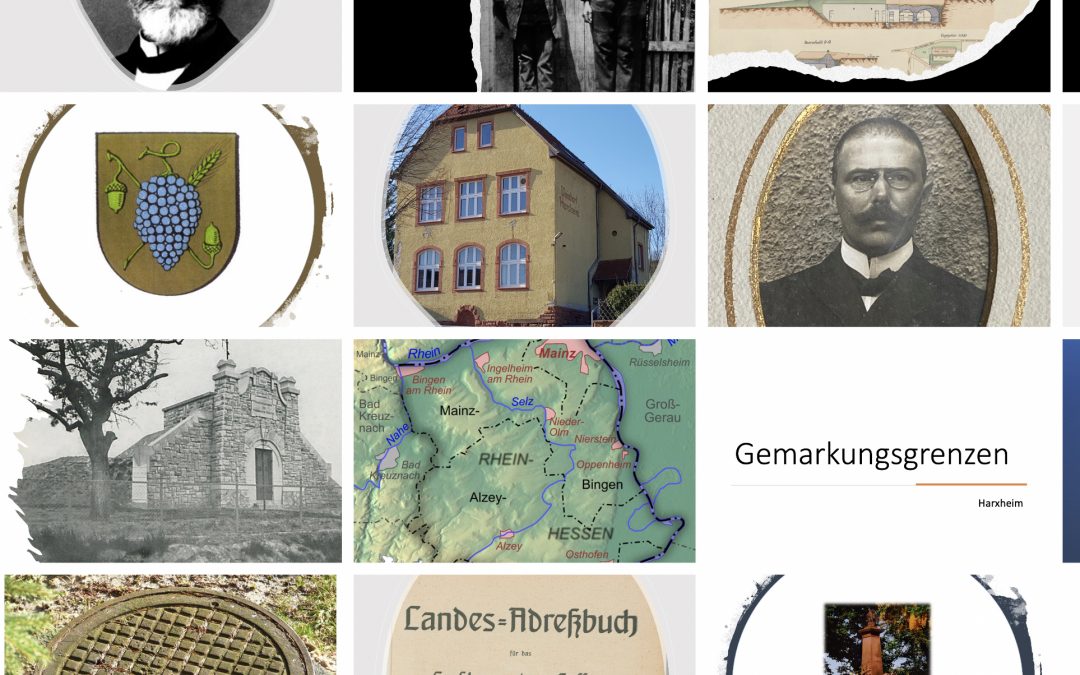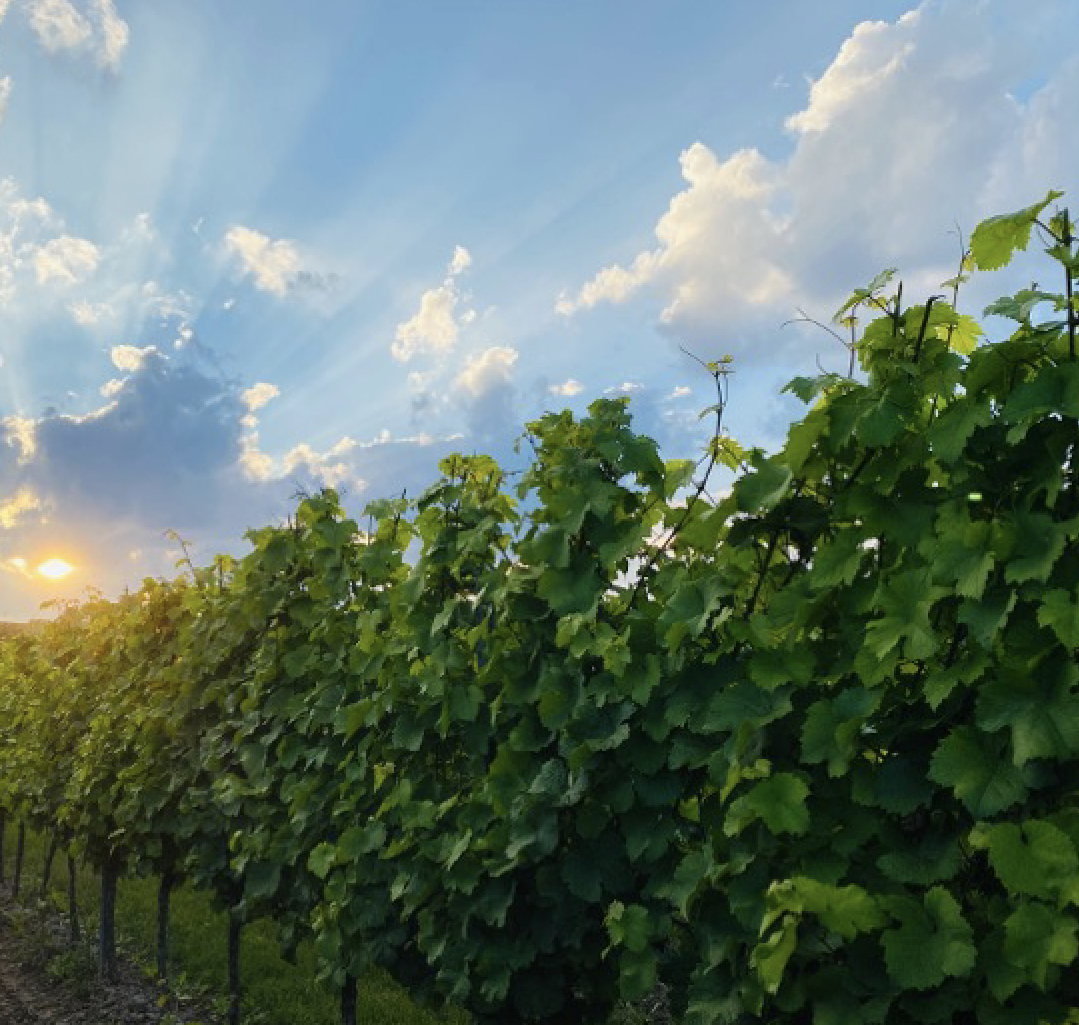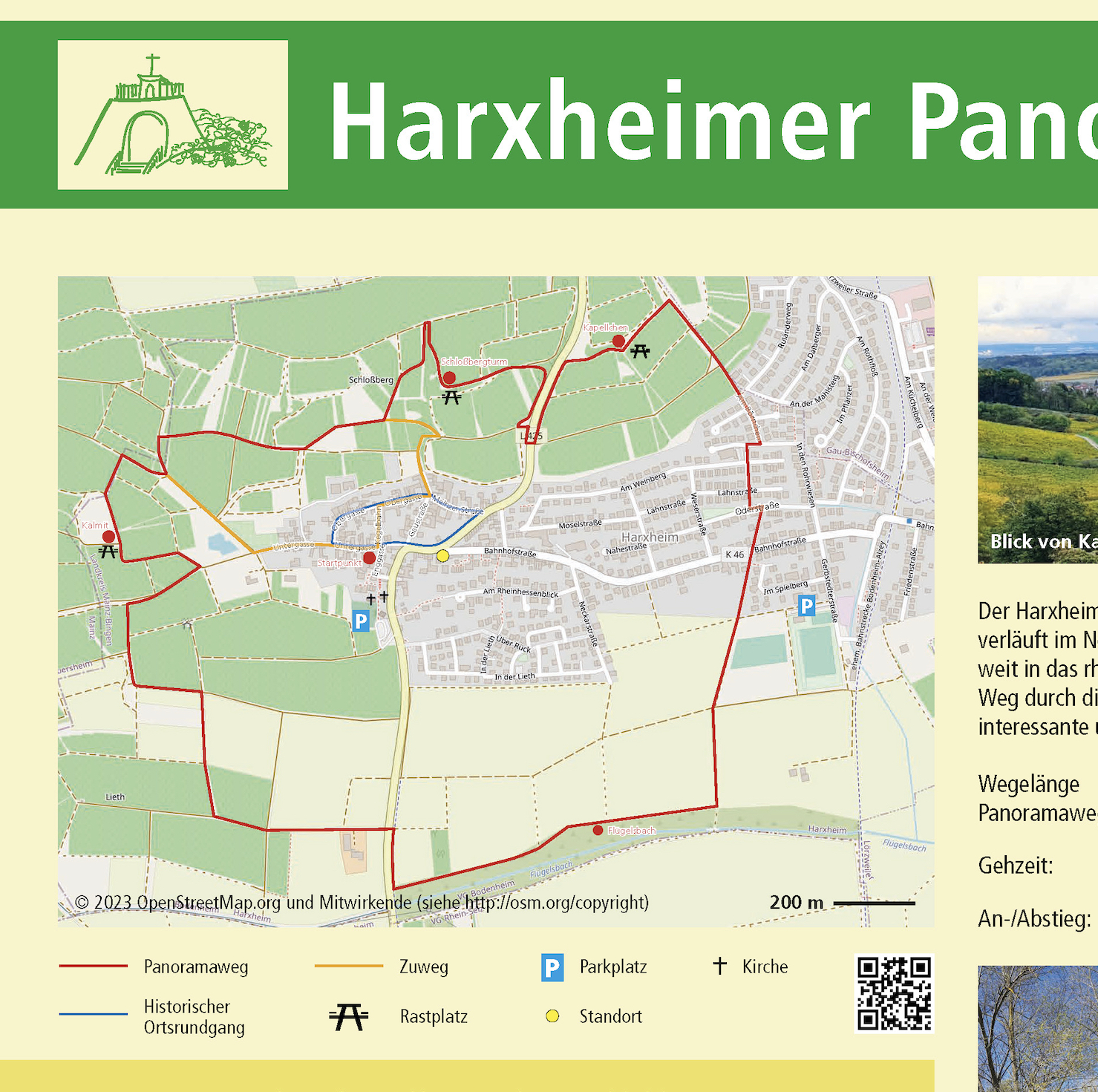As part of an EAFRD- and LEADER-funded project, the HVV-Harxheim has carefully researched, documented and prepared the history of the village. A historical local loop trail and the Harxheim Panorama Trail were created, videos of contemporary witnesses were produced and the VinoMobil, our bar truck, was put into operation.
Numerous information boards on the circular routes provide information about the historical, geographical and architectural features in and around the village, supplemented by information about the flora and fauna in the district. These information boards are each provided with a QR code, so that the interested viewer is guided directly on site to the detailed information on this page – in different languages.
In the video recordings, contemporary witnesses recall stories, anecdotes and personal details from days gone by and provide a glimpse of the Harxheim of yesterday for the generations of the Harxheim of tomorrow.

Fence beet
Wild carrot
Fragrant violet
Deadnettle
Herb Robert
Sweet clover
Gallant soldier
Lesser burnet saxifrage
Blackthorn
Red clover
Wild parsnip
Evening Primrose
Milk Thistle
Wild mallow
Lesser Celandine
Garlic rocket
St. John’s wort
Elderberry
Shepherd’s purse
Tall buttercup
The stained glass windows of the Protestant church
The Selz position – Harxheim fortification group
Bomber crash August 17, 1943 – Harxheim escapes disaster
Tough post-war years and “Harxheim tomatoes
Turn of the times – Harxheim from 1933 to 1945
Stroll through the history of Harxheim
Rheinhessen’s history before 1816
Rhinehessen
The Harxheim coat of arms
Economic center “Old Hashem”
The Harxheim Wine Yard Festival
Excerpts from the postal history
Saint Laurent
Cabernet Sauvignon
Blue Portugieser
Pinot Noir
Dornfelder
Gewürztraminer
Sauvignon Blanc
Jewish population in Harxheim
Jewish life in Harxheim: Fritz Mayer
Jewish life in Harxheim: Judith Mayer
Jewish life in Harxheim: Johanna Mayer
Jewish life in Harxheim: Simon Mayer
Jewish life in Harxheim: Family Ferdinand and Judith Mayer
Jewish life in Harxheim: Family Moritz and Katharina Gutha Mayer
Jewish life in Harxheim: Other Jewish persons
Hashemer Stories
The landmark of Harxheim
The local scales – the scales in the lower lane
“Michel Michel” – the last Harxheim original
“Es Spritze-Heisje”
“Es Brockelche” – village servant, field gunner, and delivery man
About the goodness and many of the wine from the year 1558 to 1862

The project
"Harxheim: circular routes, local documentation and contemporary witnesses": This is the somewhat unwieldy name of the largest HVV project to date after the Weinhöfefest. Within the framework of the project, which was predominantly supported with European LEADER...
Acknowledgement
A project of this dimension could only be implemented with active support. We would like to thank all Harxheimers who supported us with their knowledge, photos, interviews, video interviews, old documents, photo albums and their willingness to help. And of course the entire team that researched, documented, produced, dug, concreted, screwed on, implemented and technically enabled all this with and for the HVV.
Without all of you this would not have been possible. Thank you very much!

The Board
HVV-Harxheim





